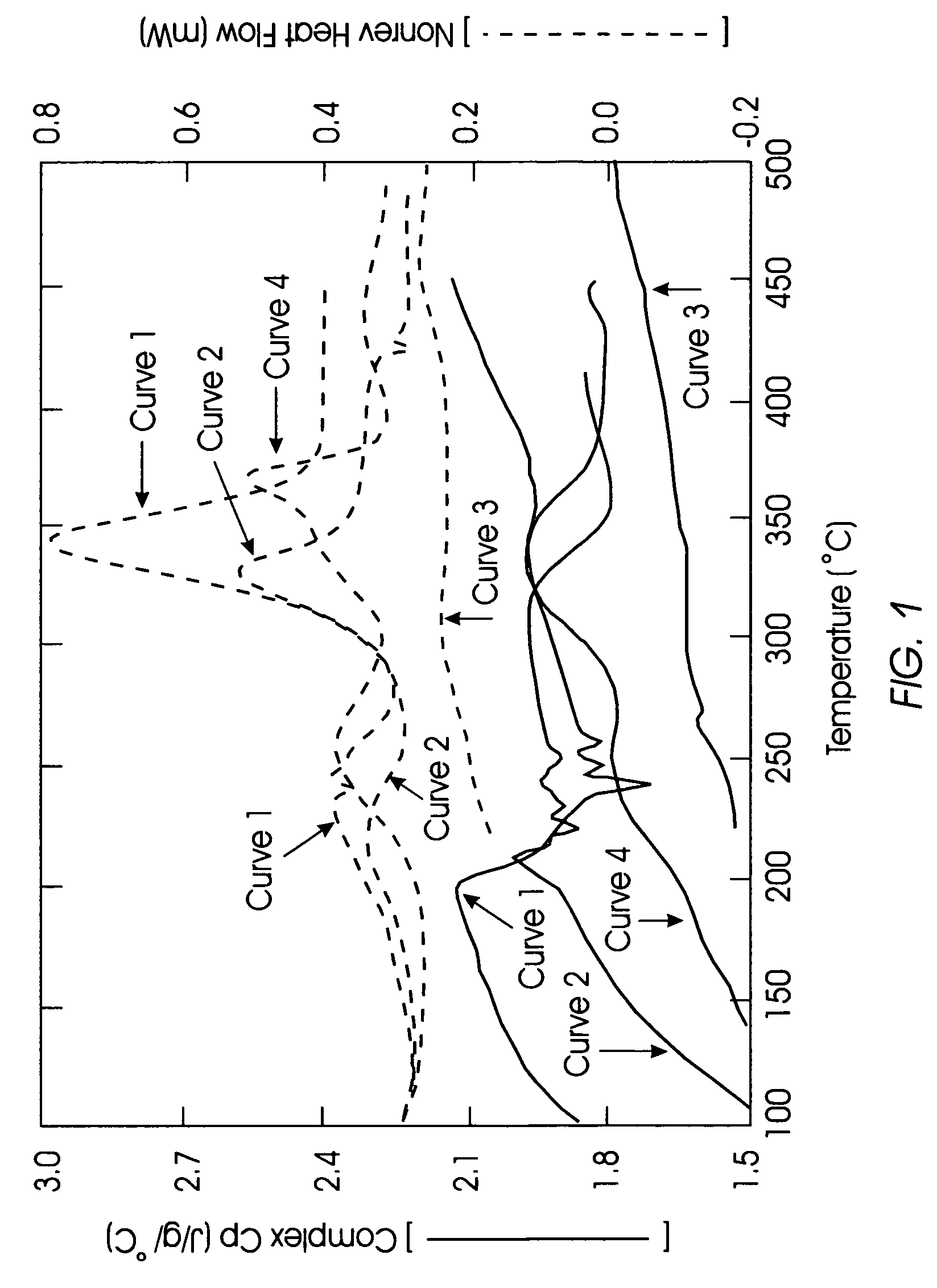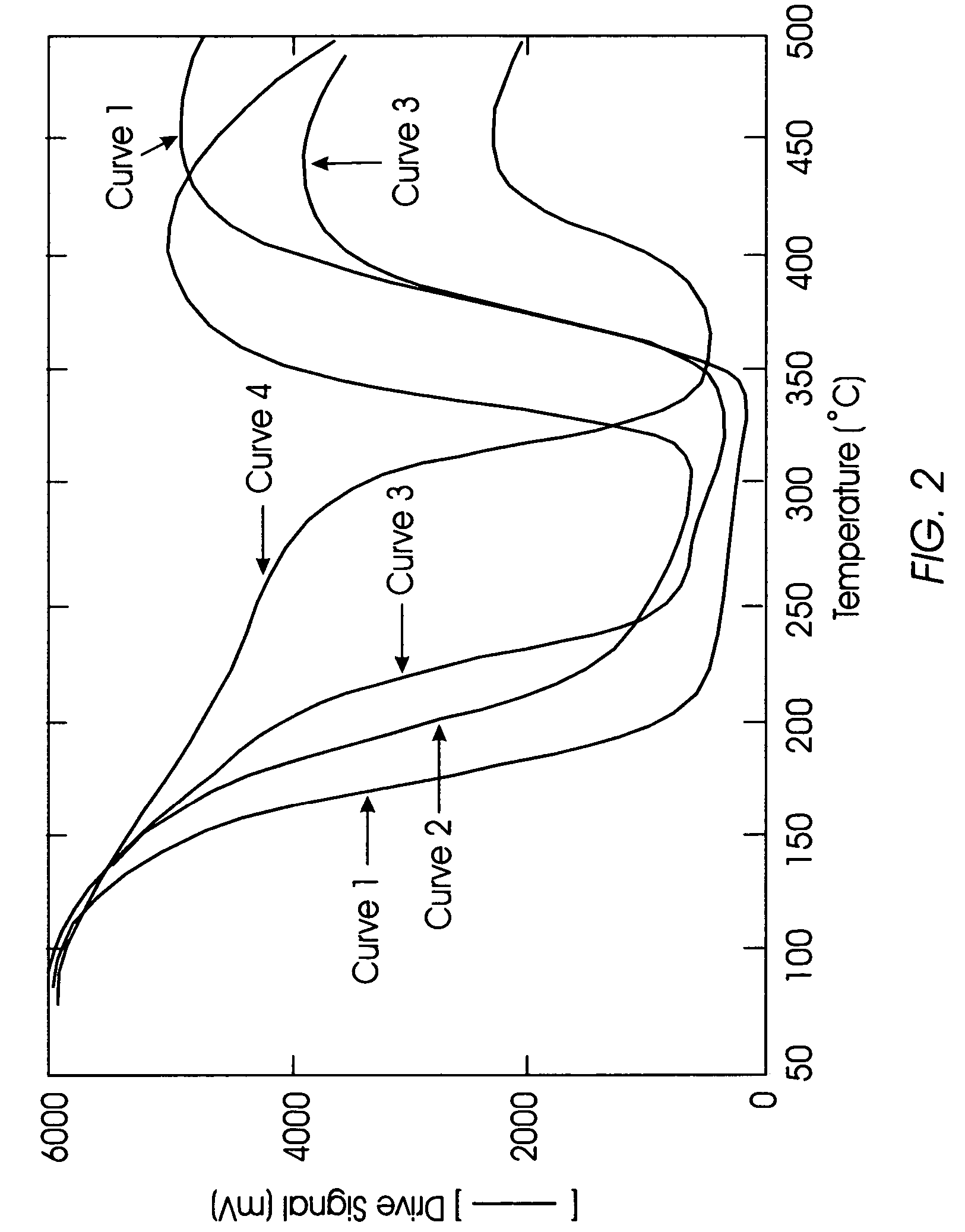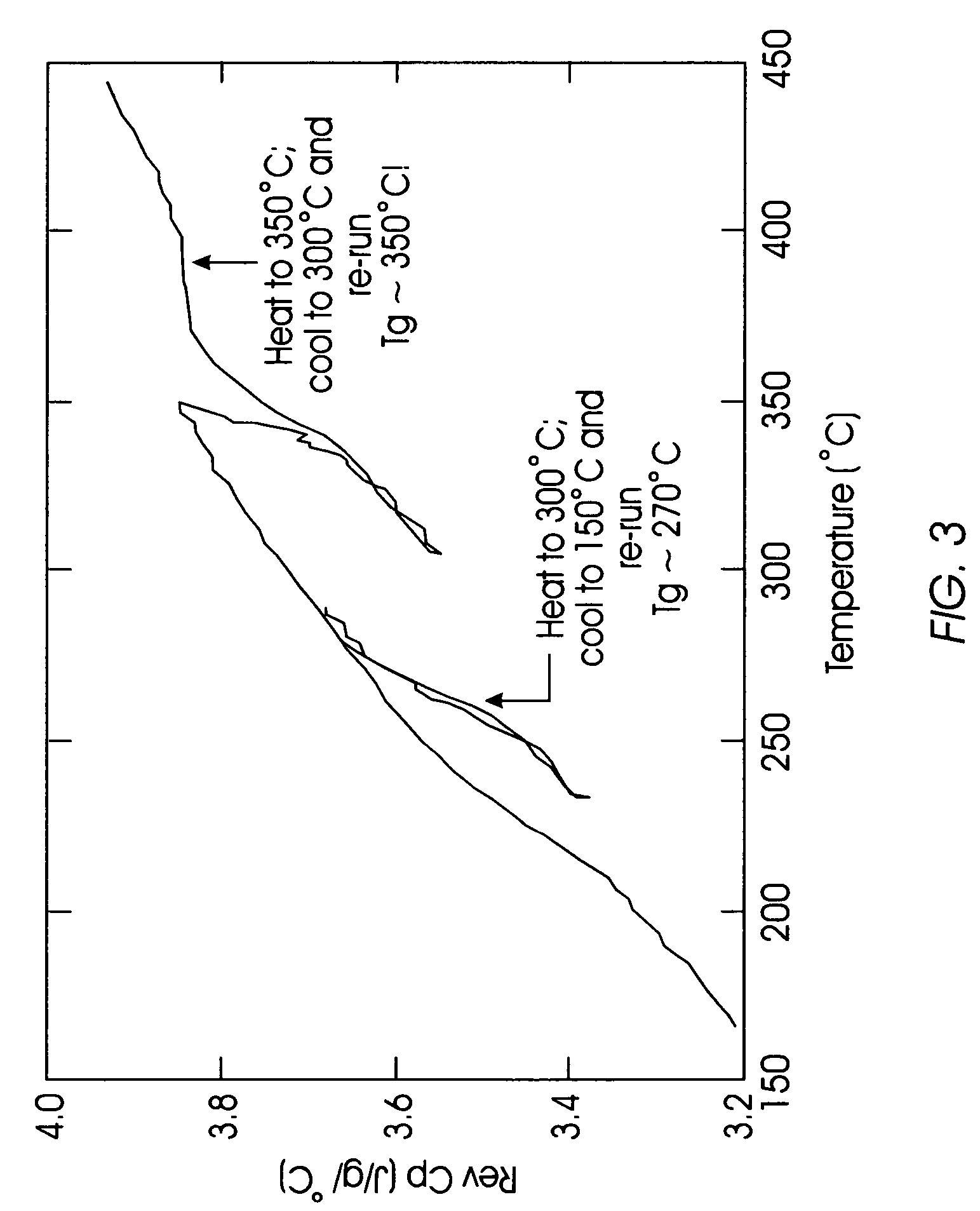Porous composition of matter, and method of making same
a technology of porous composition and dielectric composition, which is applied in the field of porous dielectric composition, can solve the problems of providing dense dielectric film which is unsuitable for many microelectronic applications, and achieve the effect of reducing the vitrification temperature of the resin matrix and preventing agglomeration in particle template approaches
- Summary
- Abstract
- Description
- Claims
- Application Information
AI Technical Summary
Benefits of technology
Problems solved by technology
Method used
Image
Examples
example 1
[0095]Effect of the reactive additives on the matrix properties-This example demonstrates that the additives of the present invention are miscible in the polyarylene resin, that the presence of the same significantly bolsters the crosslinking density in acetylene poor formulations, and that the additives significantly decrease the vitrification temperature of the polyarylene system.
[0096]The non-reversible heat flow curves provided by the modulated Differential Scanning Calorimetry (DSC) graph in FIG. 1 indicate when reactions occur within the resin. In this figure, Curve 1 is Matrix 3 / 2 with TRIS A; Curve 2 is Matrix 3 / 2 with TRIS P; Curve 3 is Matrix 3 / 2 powder; and Curve 4 is Matrix 3 / 2 with TRIS 2. When the mixtures of Matrix-3 / 2 with TRIS A curve is examined (curve 1), a broad exotherm from 200° C. to 250° C. was observed attributed to the Diels-Alder reaction in which residual cyclopentadienone units from the MATRIX-3 / 2 in the prepolymer react with acetylene units from the add...
example 2
[0099]Evidence for unexpected TTT diagram behavior.
[0100]The proceeding section describes how the low molecular weight acetylene monomers have a profound effect on the curing and resulting modulus of a polyarylene resin. As described, during the thermal ramp to the cure temperature, one role of the additive was to create a situation where the Tg of the material went to a temperature above the actual curing temperature of the system, i.e., to alter the TTT diagram. To investigate this phenomenon, additional DSC data are presented.
[0101]Curve 1 of FIG. 3 shows that when the resin is heated to 300° C. and re-run, the measured Tg of the resin is roughly 270° C. As the resin was heated at 5° C. / minute, the Tg lagged behind by 20°-30° C. which is typical of thermosets. When a temperature which corresponds to the reaction of the reactive diluent was reached, in this case acetylene monomer TRIS P, the crosslinking reaction occurs and the Tg of the resin overtakes the cure temperature. For e...
example 3
[0106]Compatibilization of Pore Generating Molecules in a Polyarylene Thermosetting Resin; the process for nucleation and growth phase separation process for porogen and polyarylene resin.
[0107]Two general strategies have been developed for the generation of porous polyarylenes: the first involves the tempting of porosity by an arrested nucleation and growth (N / G) process of a porogen with the polyarylene, while the second relies on a performed template or nanoparticle to define the hybrid morphology and ultimately the porous structure. Considerable work was directed towards the preparation of star-shaped and related polymer architectures, designed to be initially miscible with polyarylene resins and the phase separates upon network formation via an arrested N / G process. Defining the processing conditions is tedious and stringent control of the chemistry (i.e., mol. Wt., functionality, architecture, etc.) must be carefully defined to enable initial miscibility. Since the range of mo...
PUM
| Property | Measurement | Unit |
|---|---|---|
| Fraction | aaaaa | aaaaa |
| Temperature | aaaaa | aaaaa |
| Weight | aaaaa | aaaaa |
Abstract
Description
Claims
Application Information
 Login to View More
Login to View More - R&D
- Intellectual Property
- Life Sciences
- Materials
- Tech Scout
- Unparalleled Data Quality
- Higher Quality Content
- 60% Fewer Hallucinations
Browse by: Latest US Patents, China's latest patents, Technical Efficacy Thesaurus, Application Domain, Technology Topic, Popular Technical Reports.
© 2025 PatSnap. All rights reserved.Legal|Privacy policy|Modern Slavery Act Transparency Statement|Sitemap|About US| Contact US: help@patsnap.com



